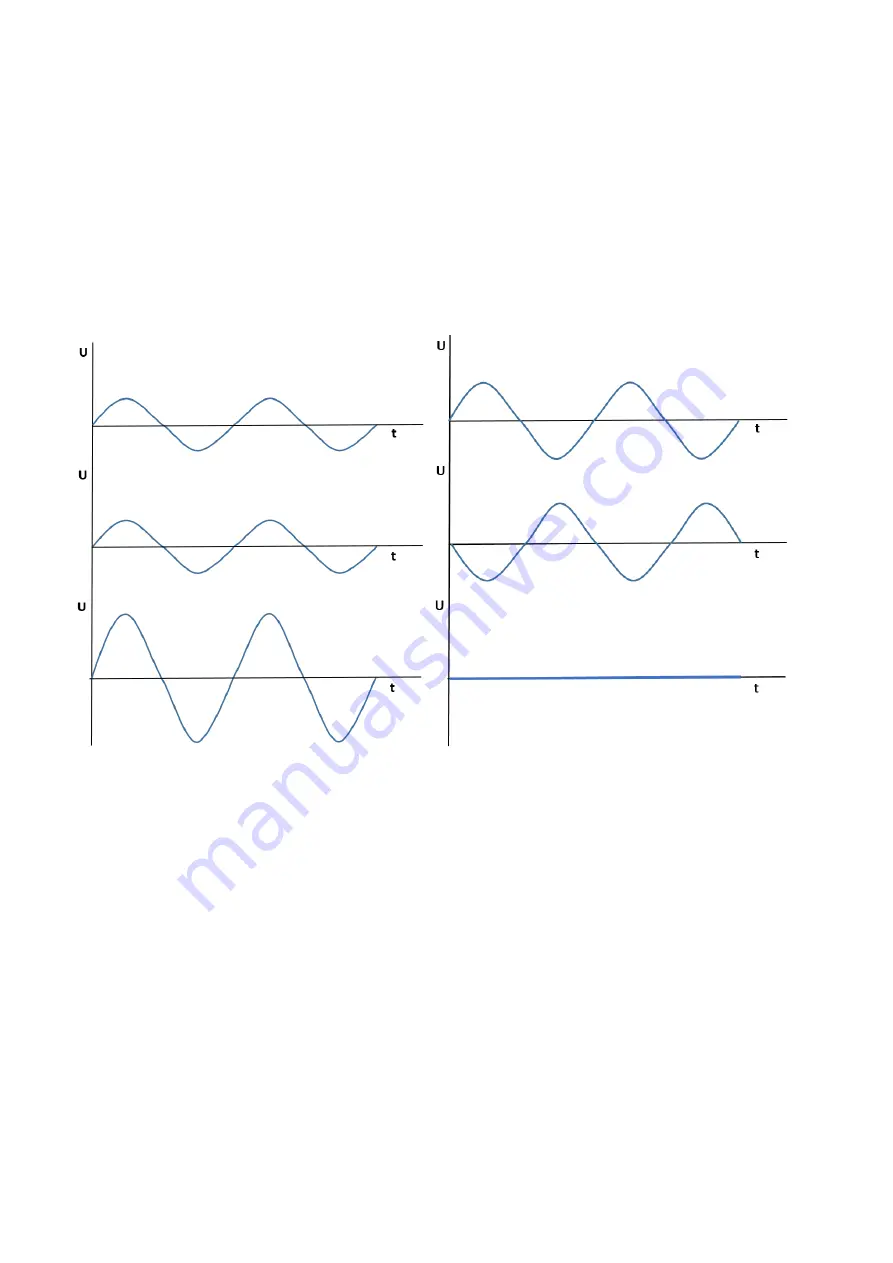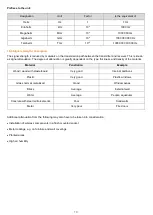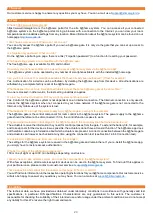
21
16.6 Polarisation
Transmitting and receiving aerials have a particular vibration direction. With vertical polarisation, the radio waves vibrate
from top to bottom. With horizontal polarisation, the wave vibrates from left to right. The direction of polarisation is
determined by the direction of the line of electric flux.
Reflexion, e.g. on a wall, may rotate the vibration direction by 90° in a worst-case scenario, then the transmitter and
receiver can no longer communicate.
16.7 Interference
Interference may occur during reflexions. In other words, a signal is boosted and/or superimposed by another one
(constructive). In a worst-case scenario, an interference signal may go so far as to obliterate the superimposed signal
(destructive). The phasing of both signals is then shifted by 180°, i.e. the negative half-wave of signal 1 lies above the
positive half-wave of signal 2.
Constructive interference:
Destructive interference:
16.8 Duty cycle
In the frequency band used, the maximum transmission time of any device is 1% per hour (the equivalent of 36 seconds
an hour). In particular cases, e.g. when starting up or installing an extensive b@home system, the duty cycle can be reached
by the frequently initiated training processes. The “Wireless” lamp (see Section 8.) on the b@home gate lights up blue to
indicate that the duty cycle has been reached.
When the maximum transmission time is reached, the devices affected stop transmitting wireless telegrams and changes
in the system are not taken into consideration for a short period (max. 1 hour).
Source signal
Source signal
Influencing signal
Influencing signal
Result
Result



































